

TV
Top 5 Korean TV Horror

Kingdom
What could be better than a beautifully realized Joseon-period K-Drama, starring the excellent actor Doona Bae, fresh off her grand success in Netflix’s ‘Sense8’? All of that, but with zombies!
Oh this is a great one ya’ll. Adapted from a webcomic known as The Kingdom of the Gods, the show addresses the huge gap between the high and low classes plaguing (sorry) our Kingdom and of course has several engaging mysteries running throughout, but also happens to be a monster mash in the fantastic new zombie way reminiscent of Train to Busan! The show got not one but two well deserved seasons and even spawned (very sorry) a Netflix special, Kingdom: Ashin of the North, that yes, spoilers, features a zombie tiger. And it is absolutely amazingly rendered too.
Kingdom on Netflix gives us a breathtakingly possible story from long ago, both lovely and terrifying in equal measure, that should get a view from everyone!

Goblin: The Lonely and Great God
Whatever other great supernatural romance KDrama you think is awesome, Goblin did it first. Also known as Guardian: The Lonely and Great God, the show graces us with outstanding performances from Gong Yoo as our Lead and Lee Dong-wook as the Grim Reaper, and is a romance with a supernatural twist for the ages. Like, literal ages. So Ji Eun-tak (Kim Go-eun), a bubbly high school student despite her tragic family history and her ability to see ghosts, who knows diddly about fate and the machinations of destiny, is skeptical in the beginning. But as the supernatural of the Goblin and the Grim Reapers and the search for a destined bride across space and time catches everyone in its clutches, love in all its messy, gloriously alive splendor may just save the souls of everyone involved!
Catch Goblin or Guardian whatever you want to call it, on Amazon Prime now!

Squid Game
This choice is obvious, though honestly it’s kind of sad at the same time. The main reason most of us enjoyed Squid Game quite that much, was because it was entirely possible, for pretty much all of it, to happen tomorrow. The show was so engaging in its many different portrayals of the lowest, pettiest, and darkest parts of humanity that were given to us by these actors like it was pulled out of their very souls and offered up to us the audience on a platter, and we ate, we consumed, with relish. Hell, we demanded a sequel series, which should be coming out soonish.
It says a fair bit about us as a species as we watch these poor, both literally and figuratively if you think about it, people participate in what are actual Games of Death. The show launched another wave of interest in large-stakes games, Korean culinary culture (ask me about the dalgona crack!), and became iconic with the jumpsuit and the blank mask with a shape on it. Have you seen the tinies who wear the jumpsuit and shape-mask to go trick-or-treating? They’re five years old. Did you let them watch the show?! Wow.
We all know Squid Game is a Netflix show, right? Right.

Tale of the 9 Tailed
Plenty has been said about the kitsune, the magical Japanese 9-tailed fox, while the Korean version is known as a gumiho, and is similar-ish in nature and magical powers. Like their other Asian counterparts, the gumiho is known to be otherworldly and long-lived, snarky and arrogant when it comes to humans, unless the prospective human love interest happens to come entangled in the threads of fate and destiny. … Well, guess what!
Celebrated lead Lee Dong-wook is our Korean fox main character Lee Yeon, former mountain spirit and guardian who now spends his earthly time carrying out missions from the Afterlife Immigrations Office while looking for the reincarnation of his former love, the exiled 7th daughter of the former King of Joseon, she who carries the fox bead, Yi Ah-eum, or Nam Ji-ah (Jo Bo-ah) as she’s known here in the modern era.
We’ve got Spirits of Darkness, shamans and Dragon Kings, shapeshifters and turning-humans-into-trees type curses, long-standing grudges and the binding if not choking ties of fate and destiny, all bound together with great love that spans lifetimes! Chase those nine tails of the gumiho on Netflix!

Bulgasal Immortal Souls
This is a hard one ya’ll – featuring pretty constant violent death-and-rebirth, a craptastic ton of guilt everywhere, actual physical and emotional abuse from trusted authority figures and family, no sexual abuse but it sure is strongly threatened and implied, and the equivalent of a vampire crossed with a demon for the supernatural element to tie it all together, Bulgasal Immortal Souls is not for the faint of heart, or stomach.
However, the show is a gorgeous read and wonderfully shot, finding beauty in the (eventual) redemption of its characters, but boy do they take awhile to get there. And the constant, if unintentional, betrayal can start to get on your nerves. And they do, the characters do manage to find their way across fate and lifetimes to be together for a few precious moments, which is great. Be warned though, Bulgasal believes in playing things out to the final, often very bitter but in theory deserved, very end. Treasure those few precious moments, the show says, they will be gone before you know it. Not only a great horror, the show also works as an anti-valentine’s day Bulgasal Immortal Souls on Netflix now!
TV
How the TV Show ‘Buffy’ handled SA
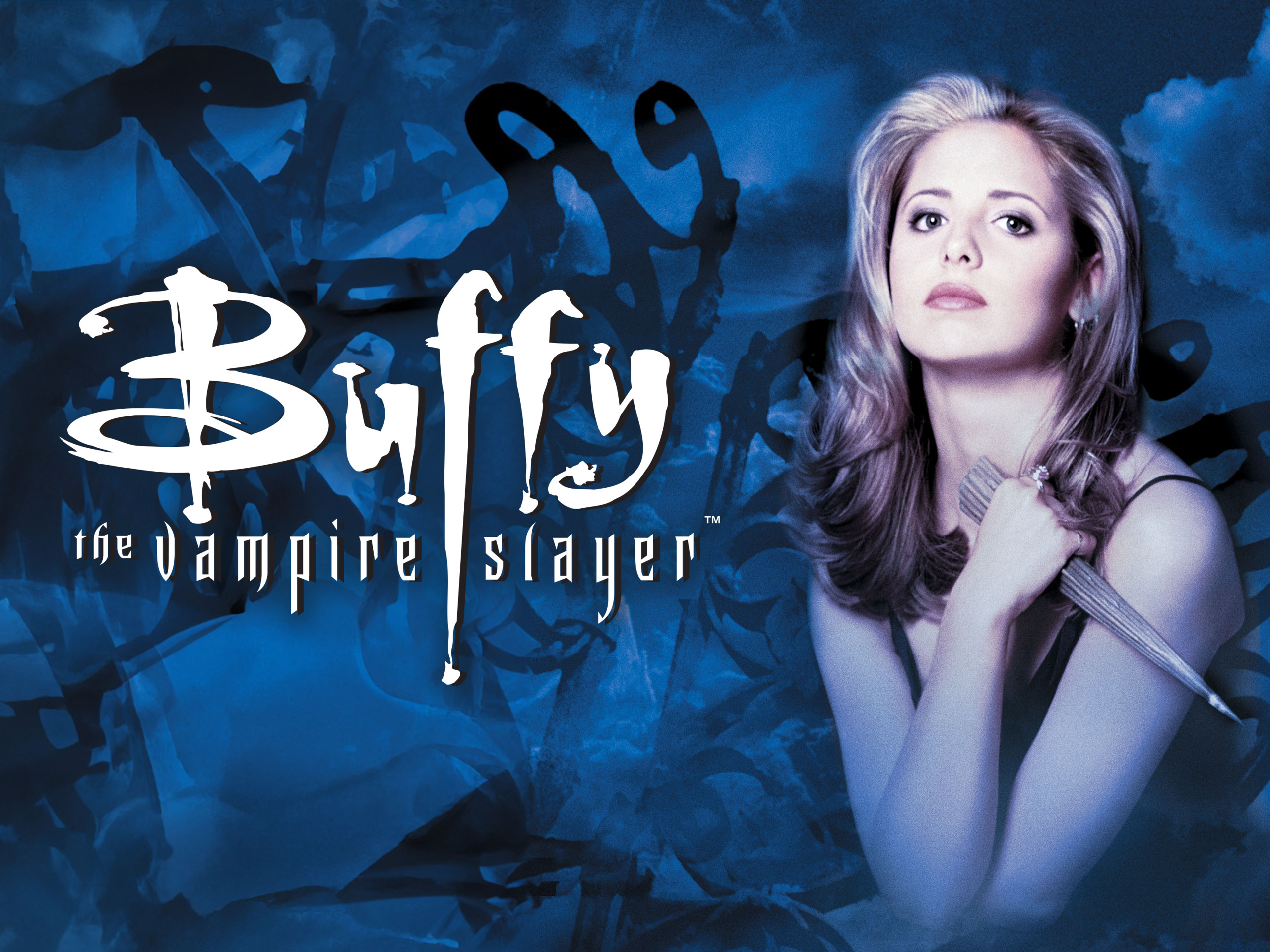
Trigger Warning: Discussions of sexual assault and rape.
In a lot of ways Buffy the Vampire Slayer was more than just a TV show…it was a feeling.
No. But it did change the way heroines were written and showed the world how awesome and self-aware supernatural comedies could be. In the mid-’90s to early ‘00s, Buffy influenced everything from fashion trends to the way we speak. The linguistic feature of speakers ending declarative sentences in an upward inflection (like everything is a question). This phenomenon, known as ‘upspeak’, became popular in the mid-90s to the horror of many a boomer.
Buffy was progressive in many ways for its time. A strong (yet at times, admirably vulnerable) relatable heroine. Buffy was cool, independent, and brimming with quippy comebacks. Buffy’s creator, Joss Whedon, may have turned out to be the bad guy but he did create an admirable main character and immerse us in her world. Buffy was one of the first primetime network shows to have a gay main character and a lesbian relationship. Lesbian-identified Willow Rosenberg ushered in a new age of sapphic style that helped generations of queer young people come out.
Throughout the show, Buffy has not one but two hot, badass vampire boyfriends. What’s not to love?
Well, as it turns out; a lot of stuff. Like many shows from that era, Buffy doesn’t always adhere to the morals and values of 2024. I am, and have pretty much always been, a Buffy obsessive (to varying degrees). Even I can admit the main cast wasn’t exactly diverse. There are of course insensitive comments and jokes that wouldn’t fly today, but what I want to focus on is the show’s treatment of sexual assault.
In Western culture, rape is seen as one of the worst that can happen to a woman, perhaps even worse than death. Throughout the series, Buffy (and her female comrades) is assaulted numerous times and threatened with rape even more.
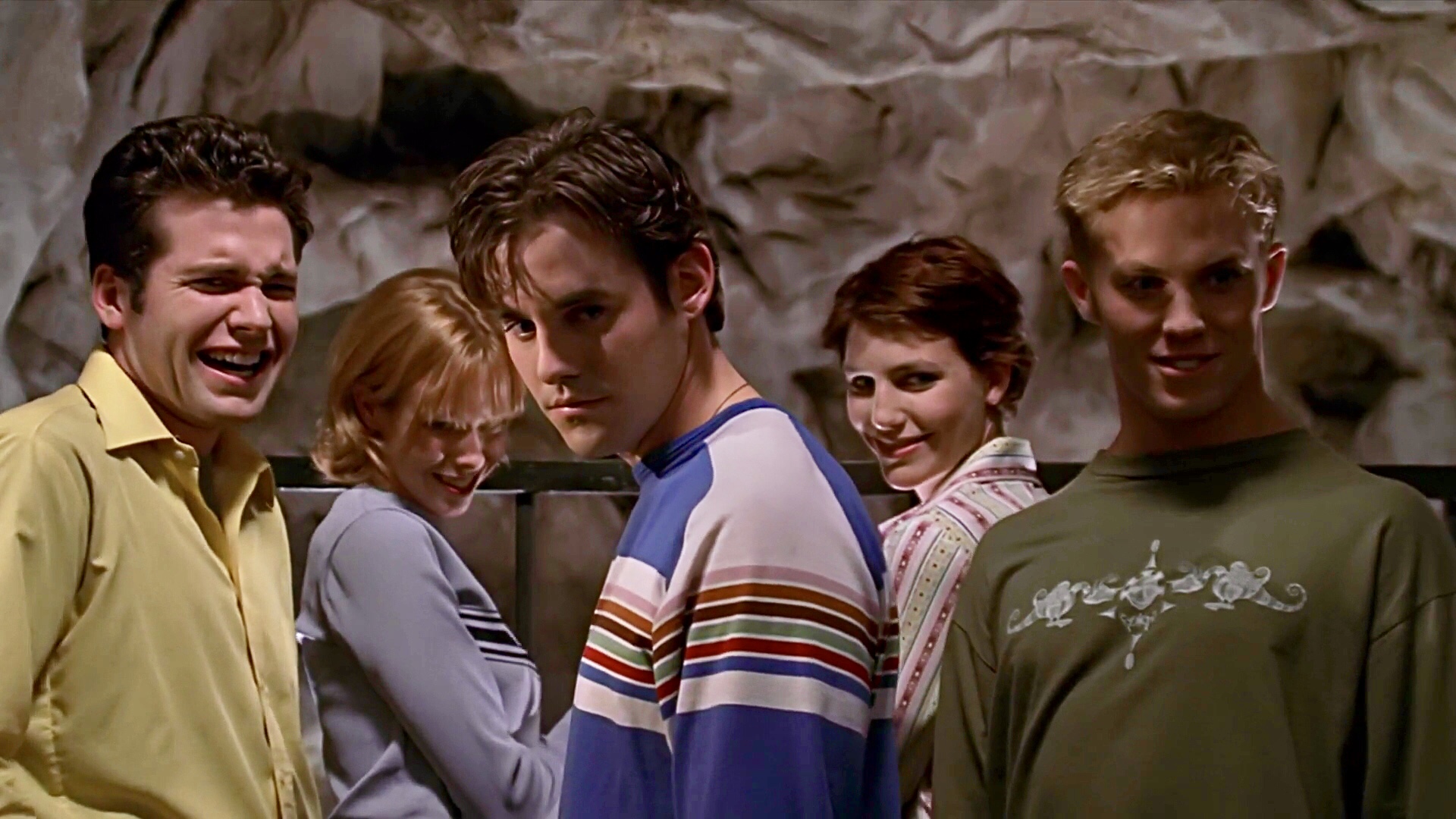
Season 1 Episode 6 – The Pack
In probably one of the weirdest plots, an early ‘monster of the week’ episode. Buffy’s closest male friend is possessed by the spirit of a hyena on a class zoo trip (it happens).
To a lot of modern fans; Xander is the archetypal ‘toxic nice guy’. Identifies as a feminist but regularly slut shames his female friends and has different rules of conduct for them than he does for himself. Regularly treats his romantic partners as less than or infantilizes them. Xander’s questionable behavior aside, this is the first episode where his true nature perhaps shines through.
Up until this point he had been attracted to Buffy. The slayer’s disinterest in anything other than friendship had caused him to act petulant and snidey in ways only a teenage boy can. As loathe as I am to compliment Nicholas Brendon (‘Xander’) the complete personality shift he embodies for possessed Xander is laudable. He’s confident, cruel, and highly sexual. Even vampiric some might say.
Possessed Xander’s newfound animalistic urges lead him to attack Buffy with a strength that matches her own supernatural strength. In an uncomfortable scene, he pins her to a vending machine and tells her: “The more I scare you…(SNIFFS)…the better you smell.”
Buffy escapes by knocking Xander unconscious and remarks to Willow that Xander “tried his hand at felony sexual assault”. It could be argued that Buffy is making light of her trauma by joking about it. However, at the end of the episode, Xander pretends he remembers nothing about his possession but then admits to Giles that he does.
Other more popular recurring characters are forgiven for their horrific behavior due to their lack of souls (being vampires). However, the show never makes clear exactly what a soul is and how it affects a person’s intrinsic goodness. It is unclear what happened to Xander’s soul during his brief possession but the instance is never brought up again.
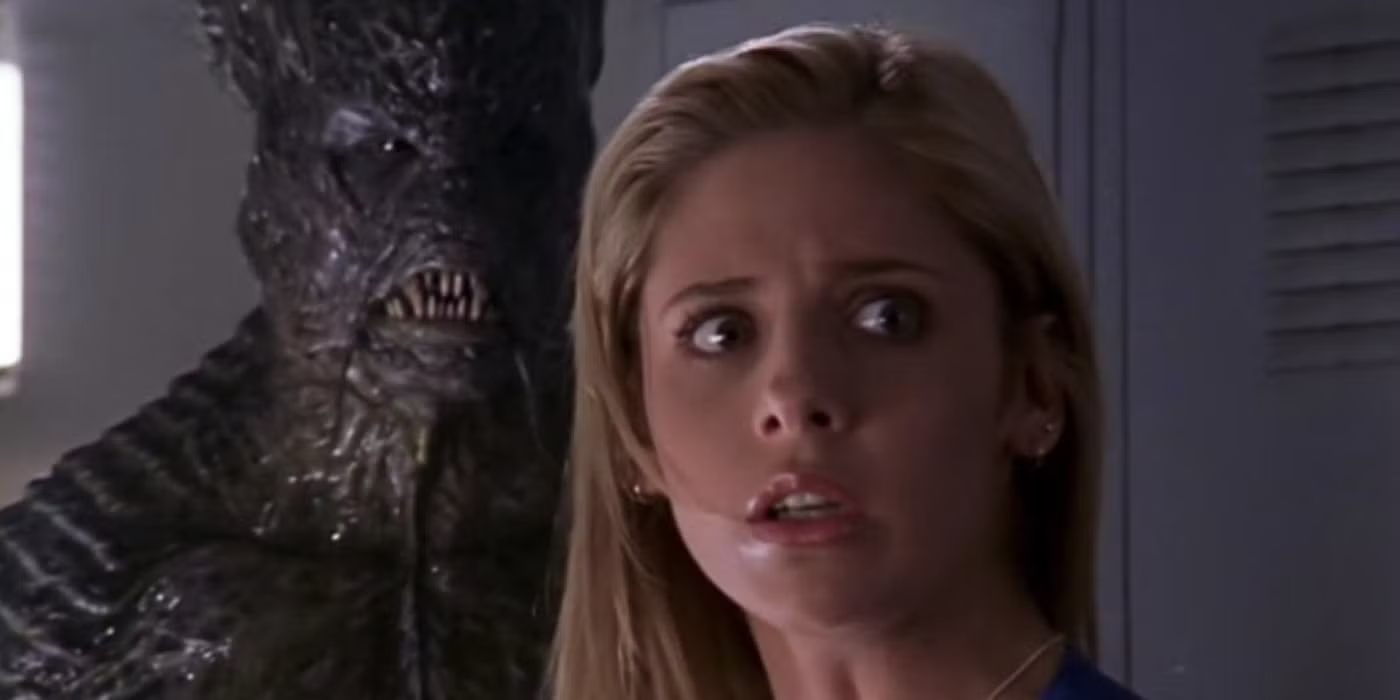
Season 2 Episode 20 – Go Fish
Yet another ‘monster of the week’ episode; the school’s swim team gets turned into sea monsters (again, it happens). Buffy goes on a date with a member of the swim team when she turns down his advances he locks his car door stopping her escape. When he tries to touch her she breaks his nose on the steering wheel. Buffy is blamed by the school for the way she dresses, almost every woman has heard that at least once!
The episode culminates with Buffy being thrown into a sewer with the monstrous swim team by the evil coach. The coach remarks that ‘his boys have already eaten “but boys have other needs”. Threatening our 17-year-old heroin with gang rape. Buffy of course jokes about her predicament and is saved in the nick of time.
It could be speculated that as Buffy is a metaphor in itself that the writers were trying to make a statement about how female victims of young male sports stars are treated.

Season 6 Episode 1 & 2 – Bargaining
Season 6 is extremely controversial within the Buffy fandom. Arguably the most polarising of the seasons. Whether you love it or hate it (I love it, just putting that out there) everyone agrees it’s the darkest season. Fittingly the season opens with Buffy being brought back from the dead and digging herself out of her own grave.
A gang of heavily pierced demons is attacking the town and is torturing the Buffybot (a replacement robot for the erstwhile slayer obviously). The head demon refers to Buffybot as “nothing but a toy, a pretty toy” in a sinister and arguably sexual way before we see her being torn limb from bionic limb.
If that’s not bad enough the head demon threatens Buffy’s friends (Xander, Anya, Tara, and Willow) by saying; “we’re just gonna hold you down and enjoy ourselves for a few hours”. He also brags about his gang’s “anatomical incompatibilities that tend to tear up little girls”. The blatant and graphic threat of gang rape disturbed a lot of fans. Was this a sign of things to come with the new direction the show was going in?

Season 6 Episode 19 – Seeing Red
And here we are. We couldn’t talk about the most controversial season of Buffy without discussing its most controversial episode. Seeing Red has fan favorite Spike (vampire) attempting to rape Buffy in her own bathroom after she is injured while vampire slaying.
Throughout most of season 6 Buffy and Spike kindled a sexual relationship. Despite the writers prefacing the two as a metaphor for a toxic relationship, the couple are championed by fans to this day.
The scene itself is horrific. I can recall watching it when it was aired at the age of 12 hesitantly through my mum’s plants it was that awful. On a recent rewatch I committed myself to watching it again thinking it can’t be as bad as I remember, despite always fast-forwarding that bit on my videos (yes, I’m that old). It was as bad as I remembered.
The scene was heavily choreographed with alternating close-ups of Buffy and Spike (separately) to inspire the audience’s empathy with each character. Along with the being so brightly lit, the scene is extremely disorienting. The choice of lighting makes the actors look all too human.
Encouraging empathy for both victim and perpetrator during a rape scene is an interesting premise. Personally, I liked how multilayered and complex Buffy and Spike’s relationship was for what was billed as a teen drama. But I, like many, was traumatized by this scene. James Marsters, who played Spike, calls shooting the scene; “the darkest professional day of my life” (Marsters J, 2024) and sends him to therapy. Buffy herself, Sarah Michelle Gellar (Gellar S, 2024) is quoted as saying that she skips that particular episode while watching with her young family.
Many conspiracies were discussed after the airing of the episode. Many thought that it was creator Joss Whedon’s way of getting the audience to hate Spike. Whedon made no secret about hating Spike and had to be talked into making the series regular due to his popularity. As tempting as it is to blame Whedon, he was barely involved in the show at the time.
It is commendable that Marsters (outing myself as a fangirl here) is willing to honestly talk about how the episode affected him personally and the fanbase. Unfortunately, the show failed to properly address Buffy’s trauma. Despite showing her having PTSD-like flashbacks to the attempted rape when seeing Spike again in Season 7.
To me, Buffy has always embodied everything that is great about being a woman. She’s strong, resilient, and unapologetically feminine. Her story is one of triumph against all odds while still staying true to herself and empowering her friends along the way. As Buffy is a feminine story perhaps it is appropriate that it shows the unfortunate side of being a female presenting person. Women are assaulted regularly and usually by close friends someone they are on a date with or someone they’ve had a sexual relationship with. Many have argued that the handling of these scenes was clumsy or even irresponsible. This may be true but having someone as inspiring as Buffy Summers overcome and thrive after an assault could prove that anyone can and make victims feel less alone.
Buffy is, as always, a source of strength for many.
TV
Sweetpea
Sweetpea is a new dark comedy series created by Kristie Swain and adapted from a novel series by CJ Skuse. The series stars the ethereal goddess that is Ella Purnell (Fallout, Yellowjackets) using her actual English accent!
Purnell plays a young woman whose name is not actually Sweetpea, though she is very much a wallflower. Though even Wallflower might have too much gravitas, Rhiannon (Purnell) is treated by those around her like a weed. She is stepped on and ignored by everyone except her dad and pet chihuahua. Many have argued that Purnell is just ‘too pretty’ to be that abjectly ignored by everyone. However, Purnell is an amazing actress who plays the washed-out, doe-eyed, shrinking ‘sweetpea’ so convincingly.
Rhiannon was bullied heavily in school which led to her developing trichotillomania (a hair-pulling disorder) which ultimately caused bald patches on her scalp. She still keeps an unconvincing brunette wig in a drawer in her bedroom. Rhiannon’s dad is constantly encouraging Rhiannon to stand up for herself. Unfortunately (light spoiler!) Rhiannon’s Dad dies from his illness in the first episode, leaving her alone in the world.
Rhiannon returns home to the large empty house she once shared with her dad. After yet another tragic incident Rhiannon looks at her life, her thirst for revenge is obvious. Particularly against her main school bully Julia Blenkingsopp (Nicôle Lecky).
Rhiannon sees Julia as having a perfect life and didn’t peak in high school “like bullies are supposed to do!”. When Rhiannon returned to work as an admin assistant for a local paper, not only did none of her colleagues notice her absence but they didn’t acknowledge her return. The only person who appears to talk to her is her boss Norman played by Jeremy Swift (Ted Lasso) who condescendingly calls her “sweetpea” and demands tea.
Rhiannon’s mental state declines enough for her to finally confront Julia in a club. Julia and her friends laugh at Rhiannon which brings memories of school back and anxiously tugging at her hair. This leads Rhiannon to commit a horrifying yet liberating crime when leaving the club leading to a whole new way of expressing herself.
What I Liked:
I enjoyed watching Rhiannon’s confidence grow throughout the series. Purnell herself spoke about the production of subtlety added makeup to subconsciously influence the change in her. Rhiannon transformed from a shrinking girl to a hip-swaying, go-getting career woman. Yet its clear there is a lot of mental turmoil within Rhiannon. Purnell (2024) jokes that she actually “got kinda jacked” due to the tension she held in her body whilst suppressing Rhiannon’s rage. Purnell also comments on how freeing it was to let it all out which Rhiannon does many times and is just as satisfying for the audience!
Initially, I found every character rather one-dimensional and stale compared to Purnell. However, as the show progresses most characters become multifaceted, particularly Julia. The narrative of the show really makes you question your own morals and sense of justice. You find yourself making excuses for Rhiannon and almost cheering her on when you really, really shouldn’t.
I also enjoyed how the show explores the victim complex. Is Rhiannon really a victim or has she taken on this mantle and lived her life accordingly? Sweetpea expertly plays with the shades of grey in the ideas of what makes someone a bully and what makes someone a victim.
Sweetpea fits in perfectly in the genre of British black comedy. Scenes like when Rhiannon is clearing out her chest freezer and then climbs in herself to see if it could potentially fit a body. The door of the freezer almost closes on her but she catches it just in time. This scene perfectly captures just what kind of character Rhiannon is.
I also liked how the character’s houses were used as metaphors for their lives. The home Rhiannon shared with her father is messy and cozy yet in desperate need of TLC and repair much like Rhiannon herself. You can tell it’s a well-loved home with a long history much like Rhiannon and her father’s relationship. In stark contrast to Julia’s fiercely stylish and minimalistic home which she shares with her fiancé. It’s sleek and modern yet ultimately empty with little sign of love.
The opening credits and music choices are also fire.
What Could Be Improved:
Like many others, I didn’t quite believe someone as beautiful as Purnell would be completely ignored by the general public. It did look at times like they were relying on drab clothing and too light foundation to make her look mousey. However, as stated, Purnell’s performance does save it.
The main ‘love triangle’ (if could even call it that) was a bit forced. Calam Lynch’s portrayal of Rhiannon’s colleague ‘AJ’ was a bit too enamored with Rhiannon with no real build-up. However, I found myself really enjoying Jon Pointing’s portrayal of ‘Craig’ and wishing his arc had been explored more.
I really wanted the show to lean more into the exploration of ‘abuser’ and the ‘abused’ and take it to a deeper level. Maybe in series 2?
All in all, I enjoyed this traverse through Sweetpea’s world. I am interested to see where they go with it in the future.
Three and a half stars.
TV
Top 5 Ash vs Evil Dead Episodes for Bruce Campbell and Horror Fans (Seasons 1-3)

If you’re a horror fan, Bruce Campbell needs no introduction. Best known for his iconic role as Ash Williams in Sam Raimi’s Evil Dead franchise, Campbell returned to his beloved role in Ash vs Evil Dead, a bloody, gory, and hilarious continuation of the series. Running for three seasons from 2015 to 2018, Ash vs Evil Dead is a fan-favorite show that blends slapstick humor with spine-chilling horror. For Bruce Campbell fans, here are the top five episodes from all three seasons that showcase his legendary performance as the wisecracking, chainsaw-wielding anti-hero, Ash.
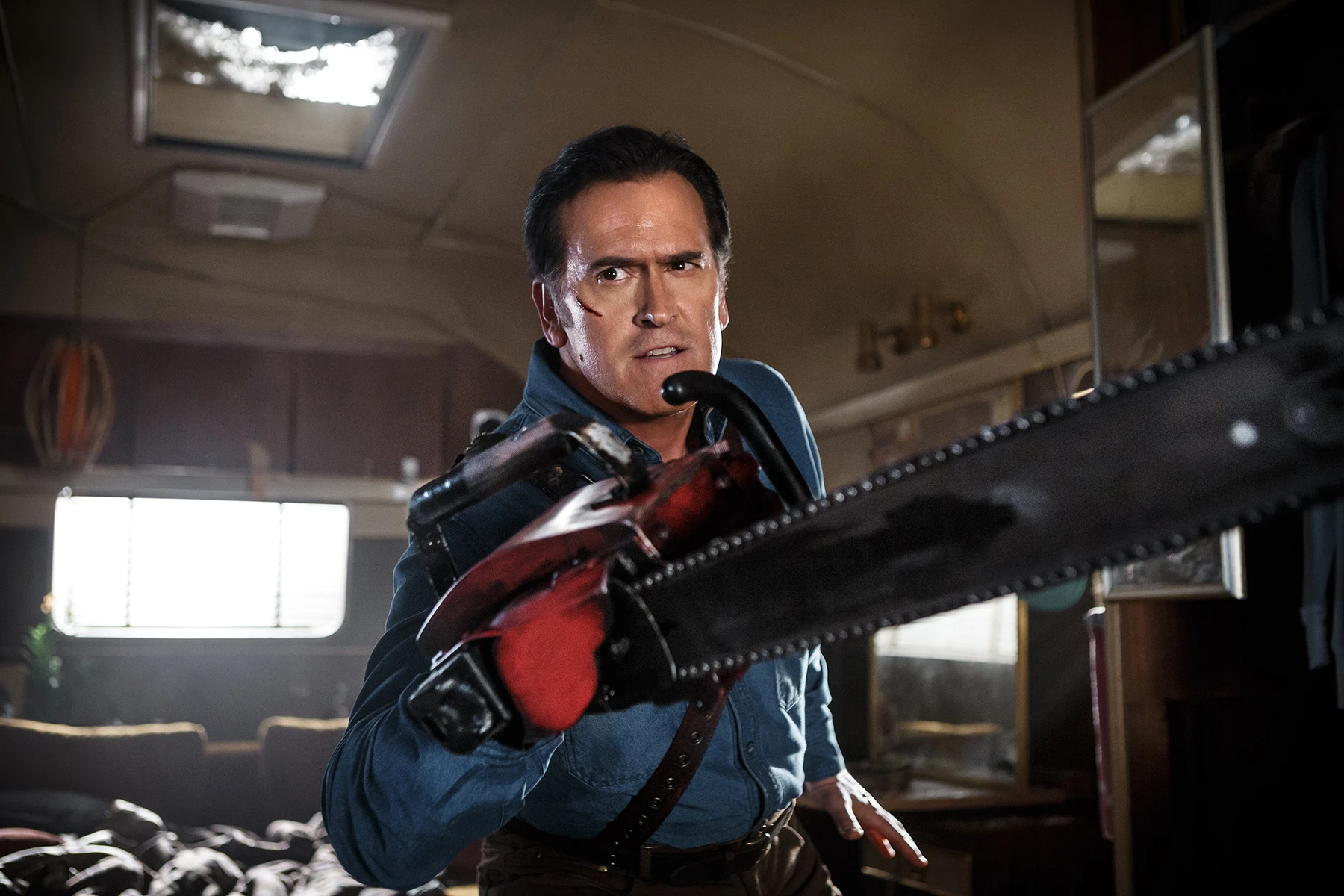
1. Season 1, Episode 1: “El Jefe”
The series premiere “El Jefe” brings Ash Williams back into the spotlight after 30 years of living a quiet life. When the Necronomicon accidentally releases the Deadites again, Ash reluctantly steps back into his role as humanity’s savior. This episode does a great job of reintroducing us to Ash’s brash, arrogant, but lovable personality, while setting the tone for the mayhem to come. Full of gore, humor, and over-the-top action, this episode is a perfect mix of nostalgia and modern horror.

2. Season 2, Episode 2: “The Morgue”
Widely regarded as one of the best episodes in the series, “The Morgue” is a gory, gross-out extravaganza. Ash and Pablo infiltrate a morgue to retrieve the Necronomicon from a cadaver, leading to one of the most memorable scenes in horror television. Without giving too much away, Ash’s battle with a corpse in this episode is both hilarious and disgusting in a way that only Evil Dead could pull off. Campbell’s physical comedy and fearless approach to the bizarre is on full display here.
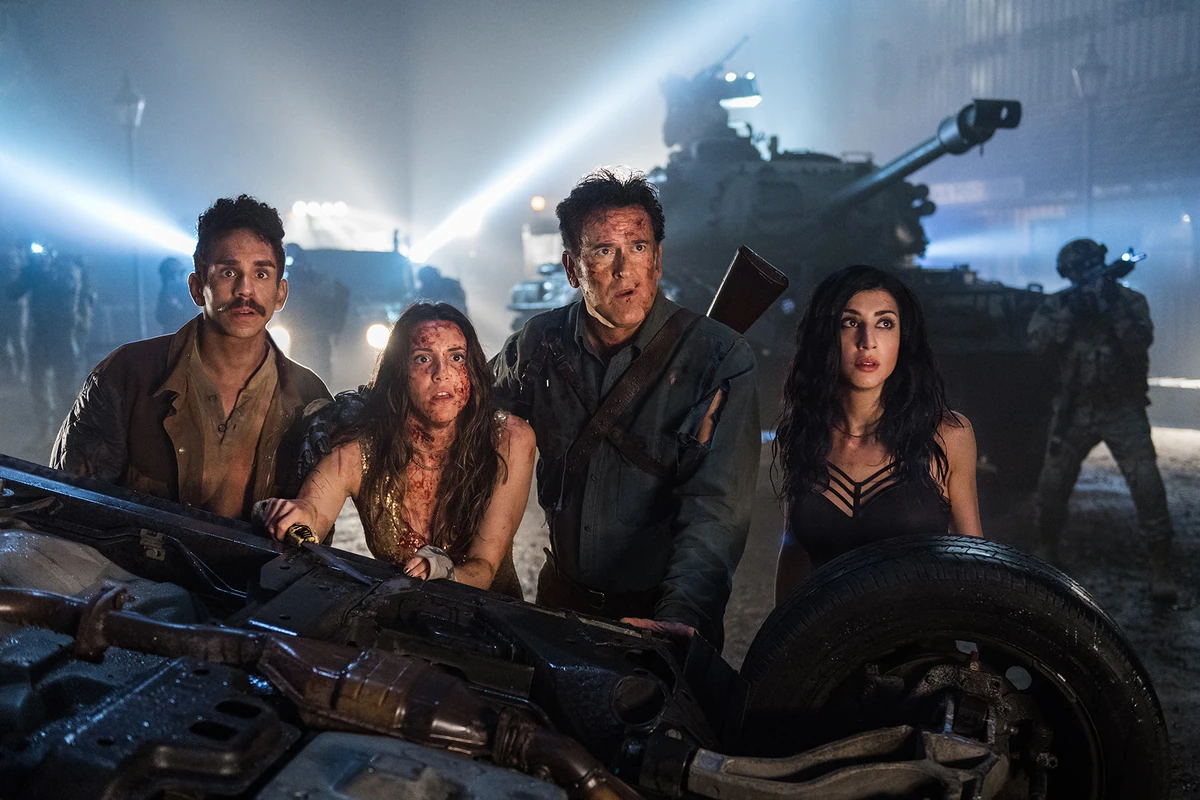
3. Season 3, Episode 10: “The Mettle of Man”
The series finale, “The Mettle of Man,” delivers on everything fans love about Ash vs Evil Dead—epic Deadite battles, blood-splattered action, and Bruce Campbell being the ultimate hero. As Ash confronts the Dark Ones and an apocalypse-level Deadite invasion, he makes the ultimate sacrifice to save humanity. This finale is bittersweet, providing plenty of epic moments for Ash while leaving fans wanting more. It’s a perfect end to a wild and thrilling series, with Campbell at his very best.

4. Season 2, Episode 9: “Home Again”
In “Home Again,” Ash is forced to confront his past by returning to the iconic cabin in the woods, where the Evil Dead saga first began. This episode is packed with nostalgia for long-time fans, bringing back all the familiar chills and thrills of the original Evil Dead films. The episode also features a strong emotional core, as Ash comes face-to-face with the memories of his friends and family who were lost to the Deadites. Bruce Campbell delivers a more layered performance in this episode, blending his usual snark with genuine pathos.

5. Season 1, Episode 8: “Ashes to Ashes”
“Ashes to Ashes” takes Ash back to the cabin for the first time in the series, where he must deal with his own demonic doppelgänger, Evil Ash. This episode plays with the classic Evil Dead themes of possession and madness, delivering a blend of psychological horror and dark comedy. The showdown between Ash and his evil twin is a series highlight, full of blood-soaked action and classic one-liners. Campbell’s dual performance as both hero and villain makes this episode a standout.
Why Horror Fans Love Ash vs Evil Dead
Bruce Campbell’s portrayal of Ash Williams is a large part of what makes Ash vs Evil Dead such a beloved show among horror fans. His ability to combine humor, physicality, and sheer badassery into one character has solidified his place as a horror icon. Whether he’s decapitating Deadites with his chainsaw or delivering snarky one-liners, Campbell’s Ash is always the highlight of any episode. His performance elevates the show from standard horror-comedy fare into a cult classic.
For fans of Bruce Campbell and the Evil Dead franchise, Ash vs Evil Dead is a must-watch series that honors the legacy of the films while pushing the boundaries of horror-comedy. These top five episodes showcase the very best of Ash’s wild, gory, and hilarious adventures. Whether you’re in it for the splatter, the laughs, or Campbell’s unbeatable charm, these episodes are essential viewing.


